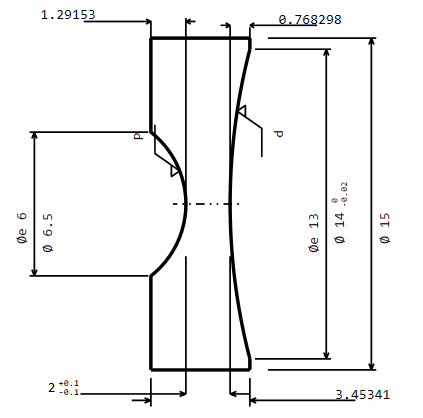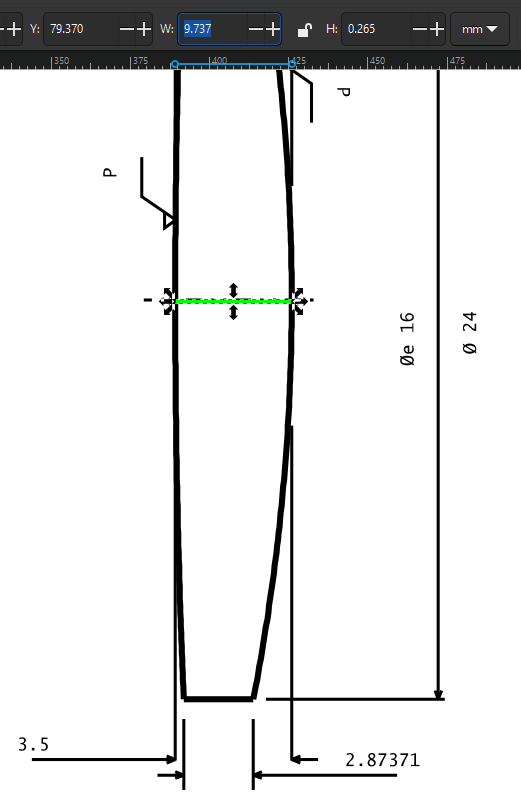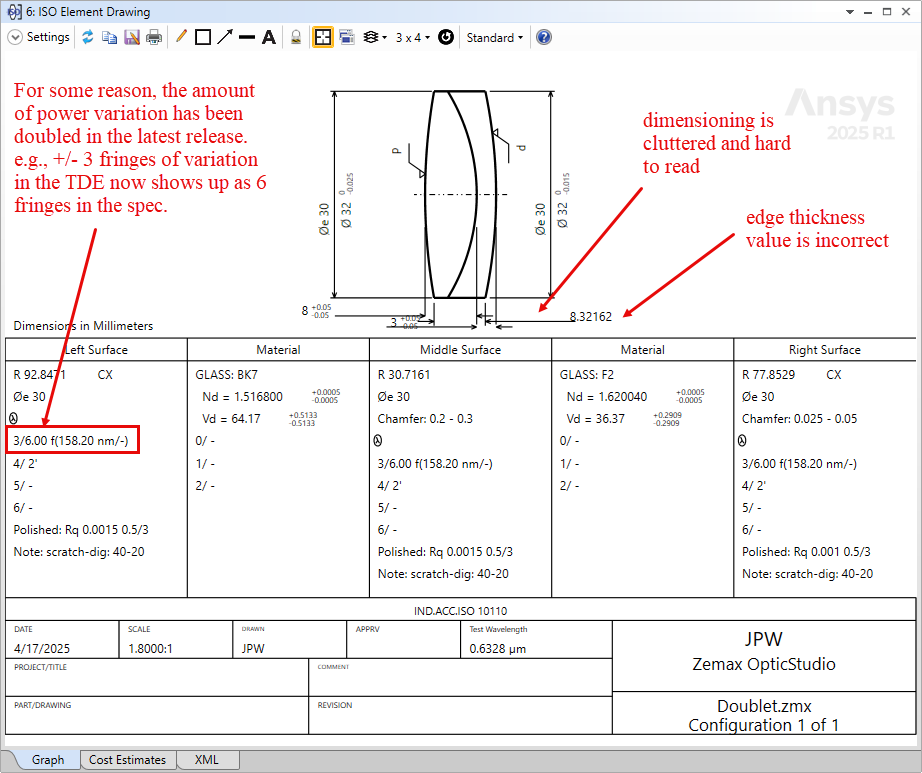Hi
In addition to my previous post (“units in the new ISO element drawing”) I would like to point out that the edge thickness annotation that has been added to the ISO drawing in the last update Zemax OS is not always correctly calculated! See example below where the edge thickness is clearly not the sum of the central thickness and the sag of the surfaces (by the way, the SAG are also not correct) . Moreover the number of decimals is a bit exaggerated in my opinion.
I think having edge thickness and total thickness of the lens indicated is a real plus (if correctly calculated 😏) but then it would be interesting to be able adding the tolerance on those values.









